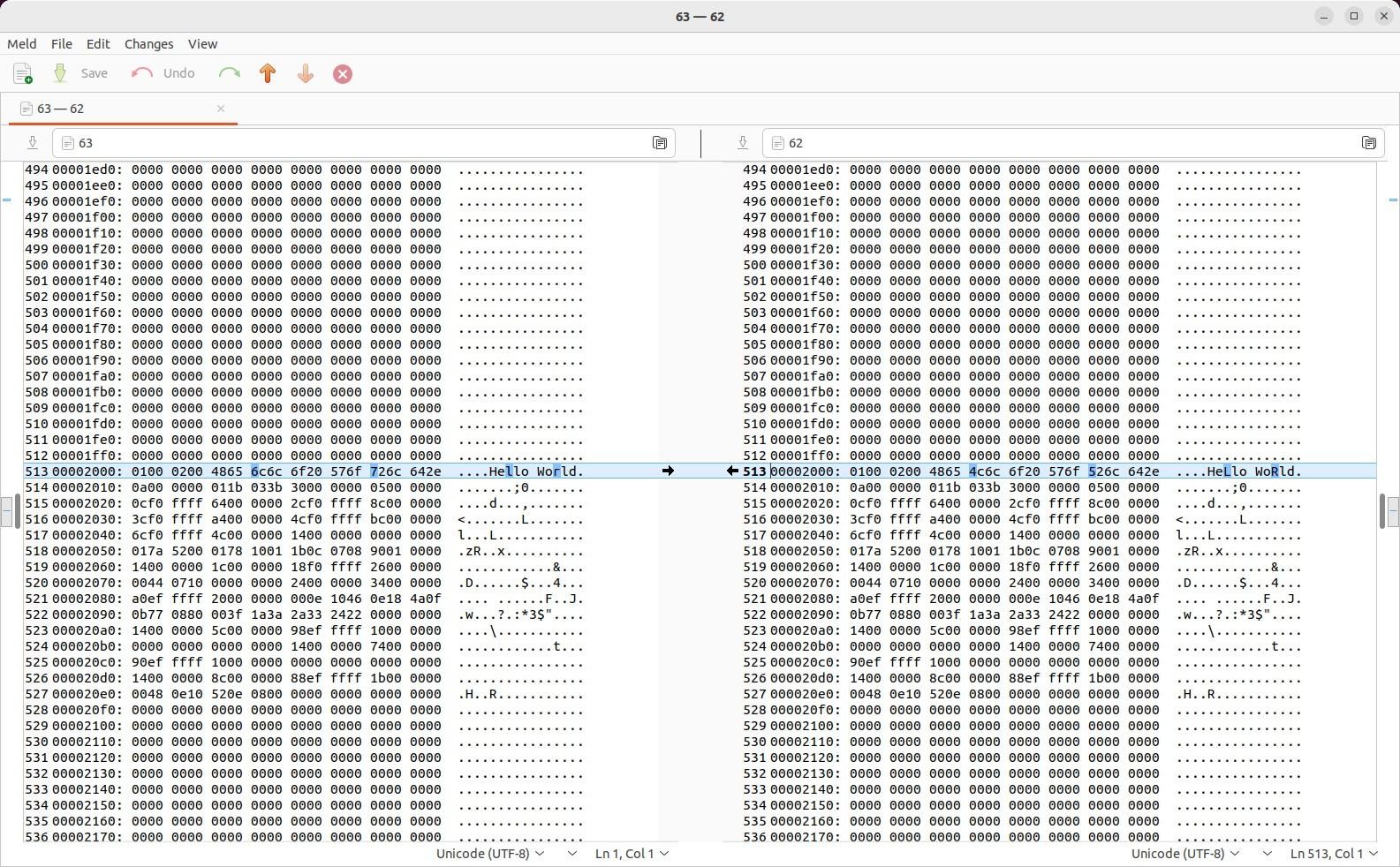Comparing binary files can be a challenging task, especially when dealing with large files or subtle differences. Meld, a visual diff and merge tool, offers a powerful solution for File Compare Binary operations, allowing you to easily identify and analyze discrepancies between binary files. This guide explores various techniques for comparing binary files using Meld and other command-line tools.
Comparing Binary Files Directly with Meld
Meld simplifies the process of comparing binary files by providing a user-friendly graphical interface. To compare two binary files, simply install Meld (if you haven’t already) and use the following command:
meld file1.bin file2.binMeld will display a side-by-side comparison of the two files, highlighting any differences at the byte level. This allows you to pinpoint the exact locations where the files diverge, making it easier to understand the nature of the changes.
 Binary File Comparison in Meld
Binary File Comparison in Meld
Navigating Meld for Efficient Comparison:
- Jump to Differences: Use
Alt + DownandAlt + Upto navigate between changes or use the mouse wheel over the center space to scroll through differences. - Edit and Save: Modify the files directly within Meld and save your changes.
- Search for Specific Content: Use
Ctrl + Fto search for text within each file. However, be aware that search might not work across line wraps.
Comparing Intel Hex Files with Meld
Intel hex files, commonly used in microcontroller firmware, require a different approach. Since they lack a human-readable format, you need to convert them to binary format before comparing with Meld. Use objcopy (or your compiler’s equivalent, such as xc32-objcopy for the Microchip XC32 compiler) for the conversion:
objcopy --input-target=ihex --output-target=binary firmware1.hex firmware1.bin
objcopy --input-target=ihex --output-target=binary firmware2.hex firmware2.bin
meld <(xxd firmware1.bin) <(xxd firmware2.bin)This converts the hex files to binary and then uses xxd to create a human-readable hex dump for comparison within Meld.
Comparing Standard Hex Files with Meld
If you have hex files with a human-readable ASCII representation alongside the hex code, you can directly compare them using Meld:
meld file1.hex file2.hexEnhancing Binary Comparison with xxd
The xxd command is a valuable tool for making binary file comparisons more informative. It converts binary data into a hexadecimal representation with an ASCII sidebar, enabling you to see both the hex values and their corresponding characters. Combining xxd with Meld allows for easier identification of differences, especially when dealing with text or recognizable data embedded within binary files.
meld <(xxd file1.bin) <(xxd file2.bin)Comparing Large Binary Files: hex2xxdhex Script
For very large binary files, comparing the full xxd output can be cumbersome. A custom script like hex2xxdhex can be used to generate more manageable files for comparison. This script converts hex files to binary, generates xxd output, and optionally removes lines containing only zeros to reduce file size, making Meld comparisons more efficient. You can find examples of such scripts online and adapt them to your needs.
Conclusion
Meld provides a versatile and powerful way to perform file compare binary operations. By leveraging techniques like direct binary comparison, hex file conversion, and integration with xxd, you can effectively analyze differences between binary files of various types and sizes. Remember to choose the method that best suits your specific needs and file characteristics for optimal comparison results.
